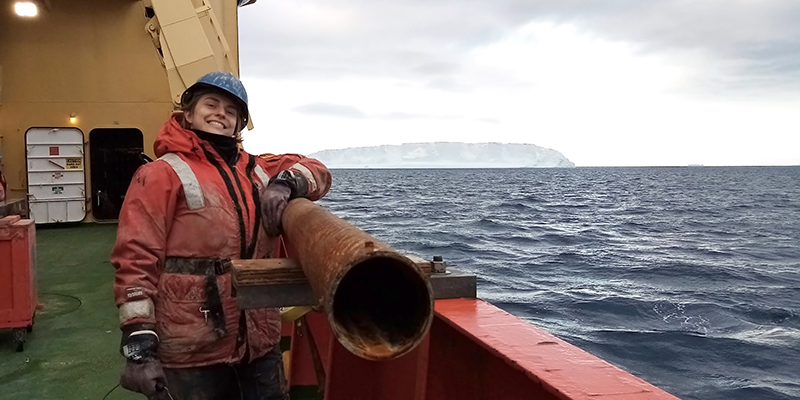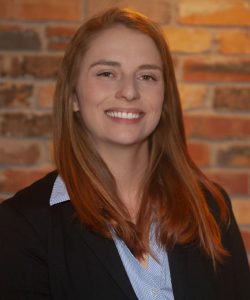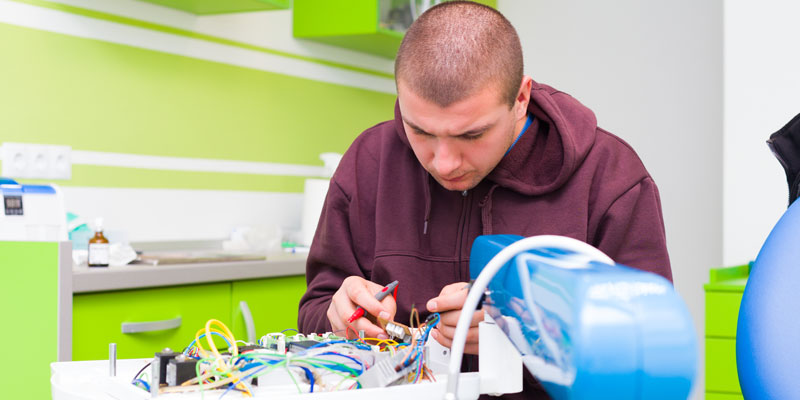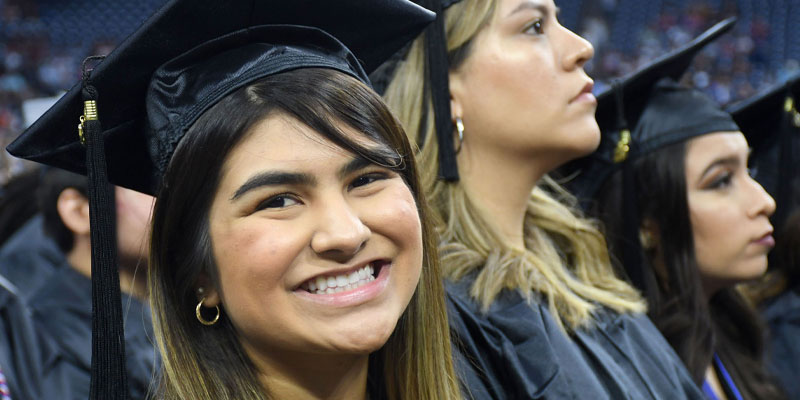
At negative 40 degrees, the Celsius and Fahrenheit scales line up.
Standing on the deck of a research boat in Antarctica, glaciers looming in the distance, Laura Taylor Barnett experienced this phenomenon herself. And beneath the balaclava shielding her nose and mouth, the San Jacinto College alumna was beaming.

In January 2020, the undergraduate student cruised from Chile to Antarctica for the Thwaites Glacier Offshore Research Project. The team of 26 geologists, geophysicists, and oceanographers were collecting sediment cores, water samples, and seismic and multibeam data to understand what drove ancient and modern glacial retreat.
Eight years earlier, Barnett would have pictured herself far from the southernmost continent. Back then, she was pursuing criminal justice at San Jac to become a correctional officer.
“I was young and wanted to change the world,” she said. “Then I got disheartened by the correctional system.”
While figuring out her new path, Barnett wound up in physical geology to fill her science credit. The course content and “young, hip” professor Dr. Liana Boop triggered her “of course” moment.
“I had always asked a bunch of questions but didn’t connect that curiosity to a research mindset,” Barnett said.
She finished as a physical science major, then enrolled in the University of Houston’s geology program. While pursuing her bachelor’s degree, she took graduate-level classes from a professor who sidelined as chief scientist for expeditions to analyze the Thwaites Glacier. This “Doomsday Glacier” is predicted to raise sea level 2 feet worldwide when it melts.
Spying her interest in climate change, this professor invited Barnett to be an alternate for an upcoming trip. Two weeks before departure, she was tapped to join the team.
“I was the alternate that got lucky,” she said.
Barnett’s team not only collected sediment cores off glaciers but also discovered a newly exposed island, which they named Sif after the Greek goddess and wife of Thor.
“Antarctica was beautiful beyond words — spectacular,” she said. “The sun never set while we were there.”
Beyond Antarctica, Barnett has studied the North American monsoon ancient record in Mexico, collected geophysical data of the Walvis Ridge offshore from Namibia, and investigated the Grand Canyon’s age of formation.
While some students earn their associate degrees alongside high school diplomas, Barnett took the opposite route — “not feeling a lot of pressure to graduate at a young age.” She started at San Jac at 19, then completed her bachelor’s degree at 28. Most semesters, she took fewer than 12 hours, focusing on exploring her interests and asking questions.
Now 29, the former undecided major is pursuing a doctorate in marine geology and geophysics at the Massachusetts Institute of Technology-Woods Hole Oceanographic Institute.
“I’m studying ancient hurricanes in the North Atlantic and the ancient oceanographic conditions that impacted their frequency — to better understand how future hurricanes will develop under rising sea-level and warming oceans,” she said.
Boop, her former professor, isn’t surprised about her path.
“Only 5 percent of the oceans are explored, so I think this curiosity will serve Laura well in the field of marine geology,” she said. “The wonderful thing about research is you can let your questions and curiosities guide you.”
Time, it turns out, was the best gift Barnett could give herself.
“I never had the mindset ‘I didn’t graduate at 22 — I’m a failure!’” she said. “My Ph.D. is so specific. I don’t think I would have gotten there if I hadn’t given myself time.”
Houston ranks among the top 10 cities nationwide for science, technology, engineering, and math careers. Explore your STEM education options at San Jac: sanjac.edu/stem.
By Courtney Morris




